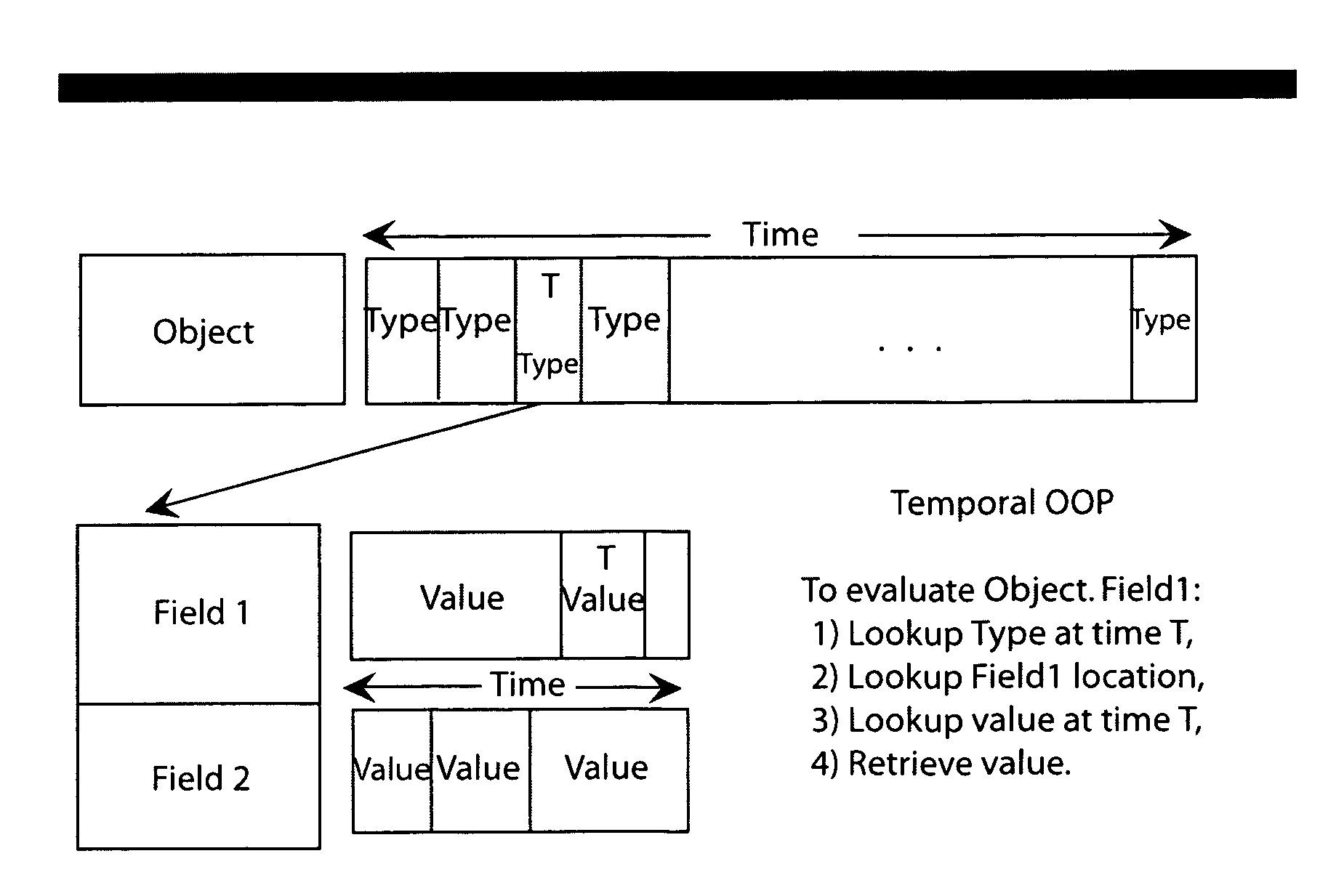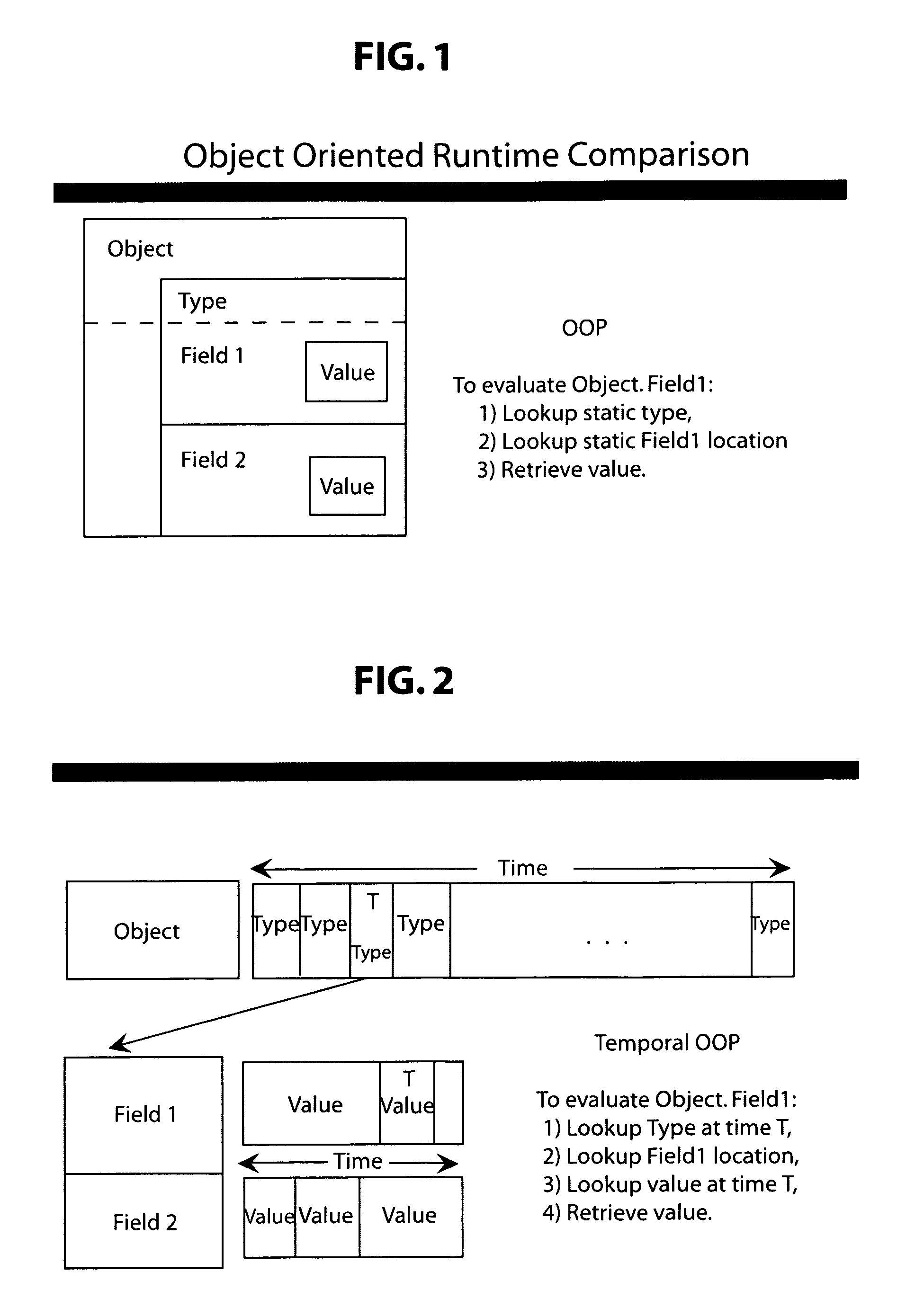Context programming in object-oriented environments
a programming environment and context technology, applied in the field of computer programs for managing data entities or objects, can solve the problems of not being able to tell the user the price of the stock, not having a uniform and consistent way of dealing with this type of data, and increasing the complexity of the databas
- Summary
- Abstract
- Description
- Claims
- Application Information
AI Technical Summary
Benefits of technology
Problems solved by technology
Method used
Image
Examples
Embodiment Construction
[0043]At an abstract level, in an object oriented program if there is a call to perform some function, e.g., a move function, applied to a data object, the data object determines “what” it is, i.e., what class it has. Based on this, it determines how to move. This is called the dispatch and may be referred to as “late binding.” In particular, the instructions for the data object's move are bound to the data object after the command to move. The present invention may be described as “even later binding.” The data object first determines “when” it is, i.e., what time is being referenced. Based on the time it determines “what” it is. Based on what it is, i.e., the class it belongs to at the referenced time, it looks up how it moves according to the attributes of that class at that time. This may also be generally referred to as “Temporal Context Programming (TCP).”
[0044]This concept of temporal context programming is implemented by a structural change, i.e., by associating with the dat...
PUM
 Login to View More
Login to View More Abstract
Description
Claims
Application Information
 Login to View More
Login to View More - R&D
- Intellectual Property
- Life Sciences
- Materials
- Tech Scout
- Unparalleled Data Quality
- Higher Quality Content
- 60% Fewer Hallucinations
Browse by: Latest US Patents, China's latest patents, Technical Efficacy Thesaurus, Application Domain, Technology Topic, Popular Technical Reports.
© 2025 PatSnap. All rights reserved.Legal|Privacy policy|Modern Slavery Act Transparency Statement|Sitemap|About US| Contact US: help@patsnap.com



